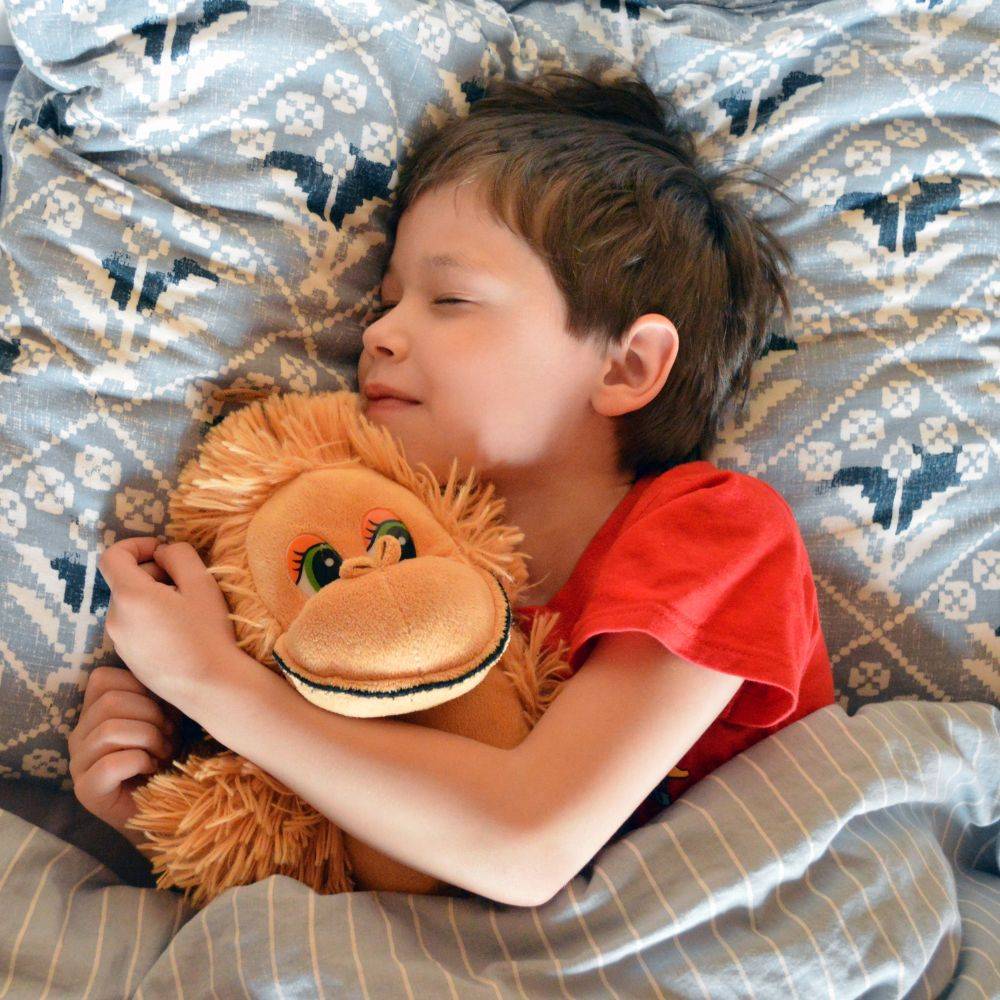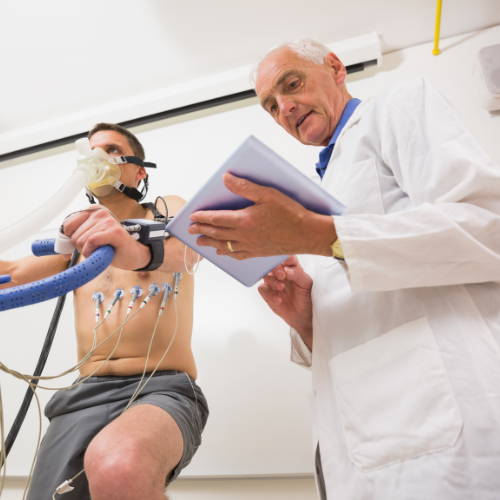Respiration optimale, autisme et développement cérébral
Respiration optimale, autisme et développement cérébral
30 MARS 2023
Découvrez comment les techniques de respiration optimales peuvent avoir un impact positif sur le développement cérébral des personnes autistes, en soutenant la fonction cognitive, la régulation émotionnelle et le bien-être général pour une meilleure qualité de vie.

Table des matières
Selon l' American Autism Association , les médecins diagnostiquent une personne atteinte de TSA toutes les 11 minutes aux États-Unis.
En 2018, le Center for Disease Control and Prevention (CDC) a déterminé qu’environ 1 enfant sur 59 reçoit un diagnostic de trouble du spectre autistique (TSA). Les garçons sont 4 fois plus susceptibles d'avoir été diagnostiqués que les filles. Aux États-Unis, environ 1 enfant sur 6 souffrait d'un handicap développemental entre 2006 et 2008, allant de handicaps légers tels que des troubles de la parole et du langage à des handicaps développementaux graves tels que la déficience intellectuelle, la paralysie cérébrale et l'autisme. (Source : CDC )
Les chiffres sont surprenants.
Si votre enfant a reçu un diagnostic d'autisme ou d'un trouble du spectre autistique, vous êtes déjà confronté à des défis comportementaux uniques. La vaste gamme de symptômes et de comportements associés aux TSA est suffisamment compliquée à gérer, ajoutez-y la gamme de problèmes de santé qui en découlent, et vous vous retrouvez dans un champ de mines à parcourir.
Pire encore, certains de ces problèmes de santé masquent souvent des TSA, ou vice versa. Par conséquent, il pourrait être plus difficile pour les chercheurs de déterminer pourquoi les enfants atteints de TSA sont plus susceptibles d’en souffrir un ou plusieurs.
La meilleure stratégie consiste à surveiller de près chaque sujet de préoccupation, aussi insignifiant soit-il. Cela peut aider à un meilleur diagnostic et à des options de traitement personnalisées. Tous les problèmes médicaux et de santé ne peuvent pas être éliminés, mais ils peuvent être minimisés grâce à une intervention précoce et à un traitement approprié.
L'autisme et les TSA exacerbent de nombreux problèmes de santé que nous ignorons habituellement. Voici un petit aperçu de certains des problèmes médicaux et de santé les plus courants, mais souvent mal compris, qui peuvent être liés à l'autisme et aux TSA.
-
Troubles de l'alimentation
Les troubles du sommeil
Pour les personnes atteintes de troubles du spectre autistique (TSA), les rapports des parents/tuteurs faisant état de problèmes de sommeil sont fréquents, avec des estimations d'environ 50 à 80 %.
Les troubles du sommeil chez les personnes autistes ou avec TSA pourraient être dus soit à des problèmes médicaux sous-jacents tels que l'apnée du sommeil, les allergies et les infections, soit à des variables environnementales. Parmi les problèmes médicaux, l’apnée du sommeil est l’une des causes les plus courantes de sommeil agité.
L’apnée du sommeil peut toucher des personnes de tout âge et plus encore les patients atteints de TSA. Les enfants ayant des difficultés de traitement sensoriel ont plus de difficultés à s’endormir et se réveillent également plus fréquemment pendant la nuit. Consultez nos ressources pour savoir comment Optimal Breathing™ peut vous aider à réduire ou à éliminer l'insomnie, ainsi qu'à soulager les symptômes de l'apnée du sommeil .
Les parents doivent également évaluer les facteurs environnementaux et découvrir ce qui fonctionne le mieux pour leur enfant en fonction de ses réactions aux changements introduits.
Pour aider les enfants à bien dormir la nuit, il est essentiel qu’une routine du coucher soit établie et suivie dans des limites raisonnables. La prévisibilité et un schéma familier et réconfortant peuvent aider à établir une structure et une compréhension. Un programme qui aide à apprendre à un enfant à se calmer, à se détendre, puis à le préparer à dormir est le cours de respiration pour enfants d'Optimal Breathing™ Academy.
Les exercices et techniques de base révélés dans ce programme peuvent être relaxants pour votre enfant même pendant la journée, et vous pouvez ensuite les utiliser dans le cadre de sa routine du coucher.

Votre enfant a-t-il un sommeil détendu
Toutes les nuits?
Laissez vos enfants apprendre des moyens naturels pour obtenir un sommeil calme et détendu grâce à nos techniques de respiration optimale.
49 $
Entraînement au sommeil pour les enfants autistes
La plupart des parents d'enfants atteints de TSA ou autistes ont du mal à établir des habitudes de sommeil positives afin que l'enfant puisse dormir toute la nuit. Les méthodes d'entraînement au sommeil peuvent aider un parent à déterminer et à faire comprendre à l'enfant qu'il est l'heure de se coucher et qu'il doit rester dans son lit.
Yemiserach Kifle, MD , directeur médical associé du Seattle Children's Pediatric Sleep Disorders Center et professeur clinique agrégé au département de pédiatrie de l'université de Washington, faculté de médecine, déclare :
Les problèmes les plus courants que nous constatons sont des cycles veille-sommeil très irréguliers, des routines de sommeil inhabituelles et problématiques (souvent accompagnées de comportements répétitifs), des difficultés à s'installer et un début de sommeil retardé, des réveils nocturnes fréquents et prolongés, une courte durée de sommeil et des heures de réveil tôt le matin. .. On ne sait pas avec certitude ce qui cause ces problèmes, mais des anomalies du rythme circadien (« l'horloge du sommeil » de notre corps), des perturbations dans la production de mélatonine et peut-être des anomalies d'autres hormones ou neurotransmetteurs peuvent être impliquées. D'autres facteurs peuvent être impliqués, tels qu'une sensibilité accrue à la lumière, au son, au toucher, à la température et au manque de routine au coucher... Le comportement d'un enfant pendant la journée est un meilleur indicateur pour savoir s'il dort suffisamment la nuit.
Les enfants atteints de TSA présentent souvent des symptômes de dépression et d’anxiété plus importants que les autres enfants. Il leur est alors difficile d’éteindre leur cerveau et de s’endormir. Les troubles du sommeil affectent toute la famille et peuvent entraîner des problèmes de comportement supplémentaires chez l'enfant.
Établir de meilleures habitudes de sommeil grâce aux exercices Optimal Breathing™ conçus spécifiquement pour les enfants aidera certainement les parents à gérer les troubles du sommeil chez leurs enfants atteints de TSA.
Convulsions et épilepsie
Une étude montre que la majorité des crises surviennent chez les enfants atteints de TSA après l'âge de 10 ans, l'âge moyen étant de 13,3 ans. Bien qu’il n’existe pas encore suffisamment d’études pour déterminer de manière concluante pourquoi les crises sont si fréquentes, les scientifiques ont trouvé des preuves étayant divers scénarios.
Le plus grand groupe à risque de troubles épileptiques semble être celui des personnes diagnostiquées avec une déficience intellectuelle en plus des TSA. De plus, les convulsions semblent être plus fréquentes chez les enfants qui ont utilisé des médicaments antipsychotiques dans le cadre de leur traitement pour les TSA.
Les patients atteints d'autisme ou de TSA sont sujets à une « respiration excessive » ou à une hyperventilation, ce qui provoque une alcalose, un déclencheur connu des convulsions.
Un e-mail d'une personne souffrant de convulsions qui a été grandement aidé par nos techniques simples et nos exercices suggérés dans le kit de maîtrise de soi Optimal Breathing™ .
Troubles de l'alimentation
La sélectivité alimentaire ou l’alimentation difficile sont présentes chez jusqu’à 70 % des enfants atteints de TSA. Ce problème est souvent négligé, car les cliniciens se concentrent sur le traitement d’autres symptômes fondamentaux plus urgents.
La dysphagie (trouble de la déglutition) est un autre problème souvent ignoré chez les personnes autistes. La dysphagie habituelle est un trouble sans pathologie physique ou médicale précisée.
Les personnes autistes présentent une incidence élevée de dysfonctionnements chroniques de la déglutition qui peuvent être à l'origine de troubles digestifs permanents ( Toman, 2010 ). La conséquence la plus grave de la dysphagie est la pneumonie par aspiration, provoquée par des particules alimentaires attirées dans la trachée. Si la personne autiste présente des symptômes tels que pousser la langue, respirer par la bouche, mâcher ou manger avec la bouche ouverte, manger trop lentement ou trop vite, ruminer, etc.
La dysphagie habituelle ne pose peut-être pas trop de problèmes dans la population pédiatrique, mais les troubles gastriques s'intensifient chez les adolescents et les jeunes adultes autistes. Au moment où la dysphagie habituelle montre des signes et des symptômes, il est peut-être trop tard pour changer rapidement. Les troubles dysphagiques répondent mieux à une intervention précoce. Changer les habitudes de déglutition grâce à une intervention précoce pour l’évaluation et le traitement des enfants atteints de TSA est la meilleure voie.
Problèmes gastro-intestinaux
La diarrhée chronique et la constipation sont deux des affections les plus courantes chez les enfants atteints de TSA. On estime qu'environ 48 % présentaient des symptômes de troubles gastro-intestinaux, tandis que 57 % présentaient une incontinence selon une étude . Un enfant souffrant de ces problèmes présente des problèmes de comportement plus importants liés à ces problèmes gastro-intestinaux et souffre d'un sommeil interrompu.
On sait que les allergies alimentaires et les troubles de l’alimentation jouent dans certains cas un rôle dans les troubles gastro-intestinaux. Dans la plupart des cas, les enfants souffrant de problèmes gastro-intestinaux peuvent ne pas présenter de symptômes typiques et, par conséquent, dans certains cas, les parents peuvent même ne pas savoir qu'il y a un problème. Des chercheurs de l'Université de Columbia pensent qu'un traitement précoce des symptômes gastro-intestinaux peut entraîner une réduction des problèmes de comportement.
Au lieu de traitements pharmaceutiques, de médicaments multiples et de remèdes en vente libre comme les suppléments vitaminiques, les approches alternatives, les enzymes végétales suprêmes et les pré et probiotiques d'Optimal Digestion, promettent d'être beaucoup plus efficaces avec des effets secondaires minimes et des résultats durables.
Anxiété, hypertension et maux de tête
Une étude de 2014 a révélé que les enfants souffrant d’hyperactivité sensorielle étaient plus susceptibles de souffrir de migraines. De plus, les enfants présentant des niveaux d’anxiété plus élevés sont plus susceptibles que les autres de souffrir de migraines ou de céphalées en grappe. Ils peuvent également souffrir de maux de tête s’ils font des headbangers.
Les changements nutritionnels, les thérapies comportementales et le rétablissement des schémas respiratoires fondamentaux comme le pack Calmant, Relaxation et Déstressant d'Optimal Breathing™ Academy peuvent aider à gérer les maux de tête et les migraines et à réduire l'anxiété et le stress en même temps.

Déstressez avec
Chaque respiration que vous prenez
Sentez-vous calme et soyez en paix avec vous-même et avec votre environnement.
49 $
Le manque d’oxygène peut-il affecter l’autisme ?
Selon un article publié dans Medical News Today , une nouvelle recherche présentée à CHEST 2011, la 77e réunion annuelle de l'American College of Chest Physicians (ACCP), suggère qu'une anomalie physique des voies respiratoires pourrait être un indicateur important de l'autisme et du spectre autistique. troubles, ce qui en fait un marqueur diagnostique possible de cette maladie.
"Avec toutes les bronchoscopies que j'ai réalisées, je n'ai pas vu ce type d'anomalie chez les enfants qui ne sont pas autistes... Cela semble être un marqueur définitif de l'autisme ou des troubles du spectre autistique."
Auteur de l'étude Barbara Stewart, MD, Nemours Children's Clinic, Pensacola, Floride.
"La respiration est le PREMIER endroit, et non le DERNIER, où l'on doit enquêter lorsqu'une énergie désordonnée se présente."
Sheldon Saul Hendler, MD, Ph.D.
Comment la respiration peut aider à gérer les symptômes de l'autisme
Si votre enfant respire plus par la bouche que par le nez , cela peut sembler une habitude inoffensive, mais cela peut avoir un impact considérable sur la santé et la capacité d'attention des enfants.
Le simple fait de faire dormir suffisamment l'enfant peut améliorer considérablement son comportement et sa concentration. Si votre enfant respire par la bouche pendant son sommeil, cela permet à la langue de descendre de son lieu de repos habituel, c'est-à-dire le palais, et de glisser vers la gorge, bloquant ainsi les voies respiratoires. Cela peut provoquer des ronflements et des apnées du sommeil , entraînant des habitudes de sommeil irrégulières et des symptômes comportementaux indésirables, du TDAH et du développement cognitif.
Une respiration anormale dans les TSA implique également une respiration rapide et superficielle ou une apnée . La respiration est essentielle à l’échange d’O2 et de CO2 et est essentielle pour gérer une circulation sanguine optimale et apporter de l’oxygène anti-inflammatoire au système immunitaire, à l’intestin et au cerveau.
La respiration diaphragmatique dominante du système nerveux parasympathique (SNP) correctement développée réduit l'anxiété , favorise le sommeil et est essentielle à la parole et à la posture.
Les enfants atteints de TSA peuvent avoir des problèmes au niveau du système limbique, une zone du cerveau responsable de l’apprentissage, de la mémoire et des émotions. Un système limbique affecté provoque également une respiration superficielle de la partie supérieure de la poitrine et une apnée du type observé dans les TSA.
La respiration chronique et émotionnelle entraîne une diminution des niveaux d’oxygène dans le corps, y compris dans l’intestin et le système immunitaire, réduisant ainsi considérablement leur fonctionnement. Une diminution de l’oxygène peut entraîner des problèmes tels qu’une inflammation de l’intestin, des problèmes digestifs et de la constipation. Des difficultés de sommeil, d’élocution, de comportement, d’apprentissage et d’anxiété s’ensuivent bientôt, entraînant des « crises » chez les enfants.
Une respiration superficielle réduit l'apport d'oxygène aux globules blancs, nécessaires pour combattre les agents pathogènes, les allergènes et éliminer les déchets métaboliques du corps.
Respiration optimale™ et développement du cerveau
Lorsqu'un enfant a recours à la respiration émotionnelle du haut de la poitrine, la demande en oxygène du diaphragme est réduite en faveur du cerveau pendant quelques secondes. Les niveaux d'oxygène cérébral doivent être maintenus grâce à une respiration dominante du SNP correctement développée afin que le cerveau dispose de suffisamment d'oxygène pour l'apprentissage et la mémoire .
La respiration diaphragmatique favorise également un meilleur sommeil, essentiel à la croissance du cerveau et à la consolidation de la mémoire.
À mesure que le système limbique est affecté par les TSA, le rythme respiratoire change considérablement et les enfants atteints de TSA respirent des montagnes russes émotionnelles.
Il est désormais prouvé que les enfants atteints de TSA présentent un flux sanguin anormal dans cette région du cerveau. Un cercle vicieux s'ensuit, dans lequel le système limbique induit une respiration sous-optimale, entraînant des niveaux d'oxygène inadéquats dans le cerveau, ce qui à son tour provoque un flux sanguin anormal vers le cerveau, entraînant une lutte, une fuite, un gel, une simulation, un trébuchement ou un trébuchement excessifs. système limbique orienté marmonnement. Et le cycle continue. La respiration thoracique supérieure rend un enfant anxieux et susceptible aux crises émotionnelles, en conjonction avec des problèmes intestinaux/immunitaires hyperacides et affaiblis.
Les techniques Optimal Breathing™ aident à respirer détendue et ancrée, ce qui contribue à diminuer les demandes métaboliques et à augmenter l'apport d'oxygène à toutes les parties du corps, y compris le cerveau. L’augmentation des niveaux d’oxygène aide à réduire le stress et l’anxiété et permet aux enfants atteints de TSA de mieux apprendre et d’améliorer leurs mécanismes de développement.
Une respiration optimale est essentielle au maintien de l’équilibre physiologique, c’est-à-dire l’homéostasie. Les TSA et l’autisme sont mieux gérés grâce à une intervention précoce, tout comme avec l’âge ; les enfants gagnent en taille et en poids, ce qui augmente encore la charge métabolique sur les systèmes en développement. Un diaphragme faible est incapable de faire face au stress, et c’est peut-être une raison pour laquelle les problèmes médicaux et de santé liés aux TSA semblent s’aggraver avec l’âge. Le diaphragme est également le principal organe musculaire du corps qui contribue à créer la flexibilité, la stabilité physique globale et la force de base nécessaires au développement de la motricité fine.
Optimal Breathing™ aide à maintenir un tractus gastro-intestinal sain. L'oxygène joue un rôle essentiel dans les processus digestifs, en facilitant l'absorption des aliments digérés, l'évacuation des matières fécales grâce à des systèmes enzymatiques activés par l'oxygène et l'action de pompage du diaphragme. L'oxygène augmente également la capacité de l'intestin à limiter les déchets nocifs qui traversent facilement les jonctions lacunaires de l'intestin, protégeant ainsi le corps et favorisant la santé intestinale. L’oxygène contribue également à améliorer la flore intestinale et l’ensemble du microbiome.
Quiconque travaille avec l'autisme sait très bien qu'établir l'apaisement et la relaxation est extrêmement important et le plus souvent difficile à maintenir. Nous avons créé quelques outils qui vous aident comme rien d'autre. Notre sangle d'expansion thoracique de 12 pieds et notre stabilisateur de schéma respiratoire optimal fonctionnent pour étendre, faciliter, équilibrer et renforcer la respiration PNS ainsi que pour la maintenir en place pendant l'activité et le sommeil. Certains de nos exercices peuvent être intégrés dans des jeux et, à mesure que les schémas respiratoires s'améliorent, l'intégration corps-esprit ancrée s'améliore également.
Lorsqu'il s'agit d'autisme, une intervention précoce peut changer une vie.
La recherche a clairement montré qu’une intervention précoce et une prévention de haute qualité peuvent améliorer l’apprentissage, la communication et les compétences sociales, ainsi que le développement cérébral sous-jacent. N'attendez pas qu'il soit trop tard.
Agir maintenant!

Rencontrez Mike White
Rencontrez Michael Grant White, le coach de respiration optimale et obtenez des informations concrètes sur votre développement respiratoire, votre santé et votre longévité.

Quelle est votre respiration ?
Vous voulez connaître l’avenir de votre santé et de votre longévité ?
Articles les plus populaires

12 avril 2021


10 février 2022


Atteignez des niveaux d’exercice satisfaisants sans aggraver le cœur existant.
Comprenez et explorez EWOT - Exercice avec oxygénothérapie.
Entretiens avec Denis
Articles sur la respiration et l'oxygène
-
Respiration
-
Oxygène
- La moisissure pourrait être présente dans votre maison en ce moment. Êtes-vous à risque ?
- Combattre le stress au travail de la bonne manière
- La mauvaise respiration provoque l’asthme – Voici quoi faire !
- Respiration optimale, autisme et développement cérébral
- Pourquoi mieux respirer ? La mauvaise respiration vous rend malade ou encore plus malade. Apprenez à mieux respirer maintenant
- Guérissez vos problèmes respiratoires avec des exercices de respiration
Rencontrez et travaillez avec nos praticiens
Obtenez une aide personnelle pour améliorer votre santé
et de la vitalité.
Bénéficiez d’un coaching et de conseils d’experts de la part de nos experts en respiration optimale.
Que vous recherchiez un expert en Respiration Intégrale, Voice Coach
ou quelqu'un qui se spécialise dans l'anxiété ou la dépression, ne cherchez pas plus loin.
Présentation du système Turbo Oxygen
EWOT SUR LES STÉROÏDES Basé sur la thérapie à l'oxygène en plusieurs étapes, également appelée OMT
Accélération du bien-être, de l’endurance physique, de la clarté mentale et bien plus encore. Aujourd’hui, les gens sont plus soucieux de leur santé que jamais. Les hommes et les femmes ont toujours utilisé la salle de sport comme lieu social ainsi que comme lieu de remise en forme, mais beaucoup de ces personnes qui appartenaient à des salles de sport trouvent désormais plus facile et plus pratique et, dernièrement, même en économisant de l'essence, de s'entraîner à la maison avec des produits achetés en magasin. équipement.
Vous connaissez la sensation que vous ressentez lorsque vous vous réveillez tôt pour vous entraîner ?




